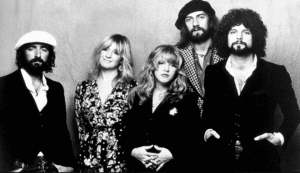8 Times a Rock Band’s Reunion Album Was an Absolute Letdown

via Georgy Porgy's Favorites / YouTube
Reuniting after years apart, classic rock bands often aim to recapture their former glory. However, not all reunion albums live up to expectations. Here are eight instances where such albums fell short:
1. Aerosmith – Done with Mirrors (1985)
After Joe Perry and Brad Whitford rejoined Aerosmith in 1984, fans anticipated a return to the band’s hard-rock roots. Released in 1985, Done with Mirrors marked their first album with the classic lineup since 1979. Despite this, the album failed to make a significant commercial impact. Critics noted that while the band’s signature sound was present, the songs lacked the energy and memorability of their earlier hits. The production quality also drew criticism, with some feeling it didn’t showcase the band’s talents effectively. Although the album was intended as a comeback, it didn’t resonate with a broader audience, leading Aerosmith to reassess their approach in subsequent projects.
2. Blue Öyster Cult – Club Ninja (1985)
By the mid-1980s, Blue Öyster Cult faced lineup changes and shifting musical landscapes. Their 1985 album, Club Ninja, attempted to adapt to contemporary sounds but was met with disappointment. The album’s production leaned towards a more polished, radio-friendly style, which alienated long-time fans. Critics pointed out that the songwriting lacked the depth and intrigue of their previous work. Tracks like “Dancin’ in the Ruins” received minimal attention, and overall, the album failed to chart significantly. This release highlighted the challenges bands face when trying to modernize their sound without losing their identity.
3. The Byrds – Byrds (1973)
In 1973, the original members of The Byrds reunited to release the self-titled album Byrds. Fans hoped for a revival of the harmonious folk-rock that had defined the band’s earlier success. However, the album fell short of expectations. The chemistry that once fueled their creativity seemed diminished, resulting in tracks that lacked the vibrancy of their classic hits. Critics noted that the songs felt uninspired, and the production didn’t capture the essence of what made The Byrds unique. Consequently, the album didn’t perform well commercially, marking a somber note in the band’s legacy.
4. Jefferson Airplane – Jefferson Airplane (1989)
Jefferson Airplane’s 1989 reunion album aimed to recapture the psychedelic essence of their 1960s heyday. Despite bringing together key members, the self-titled release didn’t resonate with audiences. The music felt dated, and the experimental edge that once set them apart was missing. Critics highlighted that the album lacked cohesion, and the tracks didn’t showcase the band’s former innovation. As a result, the album received lukewarm reviews and failed to make a significant impact on the charts, reflecting the difficulty of reviving past magic.
5. Cream – Goodbye (1969)
Cream’s Goodbye album, released in 1969, was intended as a farewell gesture from the iconic trio. Combining live recordings with studio tracks, the album didn’t capture the raw energy and improvisational brilliance that characterized their earlier work. The studio tracks, in particular, felt disjointed and lacked the cohesiveness of previous releases. Critics and fans alike sensed the band’s internal tensions, which translated into a lackluster final product. While “Badge” stood out as a notable track, the album as a whole didn’t meet the high standards set by their prior achievements.
6. Slade – Whatever Happened to Slade (1977)
In 1977, Slade attempted a comeback with Whatever Happened to Slade, aiming to adapt to the changing musical landscape dominated by punk rock. Despite their efforts, the album failed to chart and received little attention. The songs lacked the infectious energy and anthemic quality that had previously defined the band’s success. Critics noted that the album felt out of touch with contemporary trends, and the production didn’t capture the rawness that new audiences craved. This release highlighted the challenges established bands face when trying to reinvent themselves in rapidly evolving music scenes.
7. Foreigner – Can’t Slow Down (2009)
Foreigner’s 2009 album, Can’t Slow Down, marked their first release of new material in over a decade. Without original lead singer Lou Gramm, the band struggled to recapture their signature sound. While the production was polished, the songs lacked the memorable hooks and emotional depth of their classic hits. Critics pointed out that the album felt like an attempt to mimic past successes without bringing anything new to the table. As a result, the album didn’t make a significant impact commercially, serving as a reminder of the difficulties bands face when key members are absent.
8. Quiet Riot – Road Rage (2017)
Quiet Riot’s Road Rage, released in 2017, was intended to reintroduce the band to a modern audience. However, lineup changes during production led to a disjointed final product. The album lacked the raw energy and rebellious spirit that had once defined their sound. Critics noted that the songs felt generic, and the production didn’t capture the band’s former intensity. Consequently, the album failed to resonate with both old fans and new listeners, highlighting the challenges of maintaining relevance in a changing musical landscape.



















